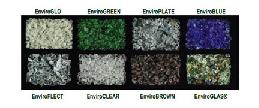
As technology advances, nature continues to amaze and bewilder mortals like us who think we are smart. The booming arena of advancement in the modern era is that of solar energy utilization which seems to outlast our limited resources that are on the verge of being extinct. There have been a number of successful experiments of creating solar power but getting it to common usage is still a distant dream courtesy the expense and performance. A seventh-grader in New York, while doing research for his high school project has come up with a seeming secret suggested by nature to make efficient use of the Sun.
Aidan Dwyer, 13, performed experiments in his backyard to come up with a new design pattern of arranging PV solar panels to extract maximum sunlight from that available. He graphed his the American Museum of Natural History Young Naturalist awardfinds in an award winning essay (the American Museum of Natural History Young Naturalist award) that is published on their site.
In the essay, Adrian explains what intrigued him into researching about the tree-branch patterns in the Catskill Mountains and imitating the branch and leaf pattern to create a tree-like solar panel pattern. He writes about the research and the outcome.
He explains that the secret of the tree branches and leaves growing in a peculiar pattern lies in the ancient mathematical sequence : the Fibonacci series. He concluded that different species maintained a different ratio of the branching structure. For instance, an Oak tree shows a 2/5 structure which means it takes two spiral rounds to cover 5 branches along the circumference of its stem. The beauty of the arrangement is that no branch ever shadows any other branch irrespective of the positioning of the Sun. He created a similar PV solar panel structure as shown in the image and compared the output with the normal flat-faced and 45 degrees inclination pattern that is hugely followed in solar power extraction.
The results were astounding. The tree design overcame the problem of objects shadowing and the continuously changing position of the Sun and the disposed angle of its rays, which the flat model was unable to achieve. Even in dark conditions like in winter, the tree model showed 50% better efficiency. Obviously, the idea deserves thumbs up.
The little genius is now extending his research and probably attracting attention of many a scientists around the world for his discovery. This leads us to think that ultimately, nature cant be won by Man.
Via: CNet




